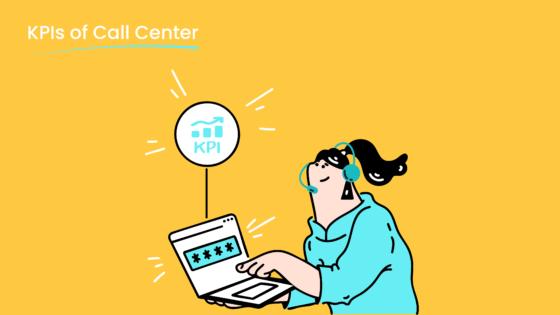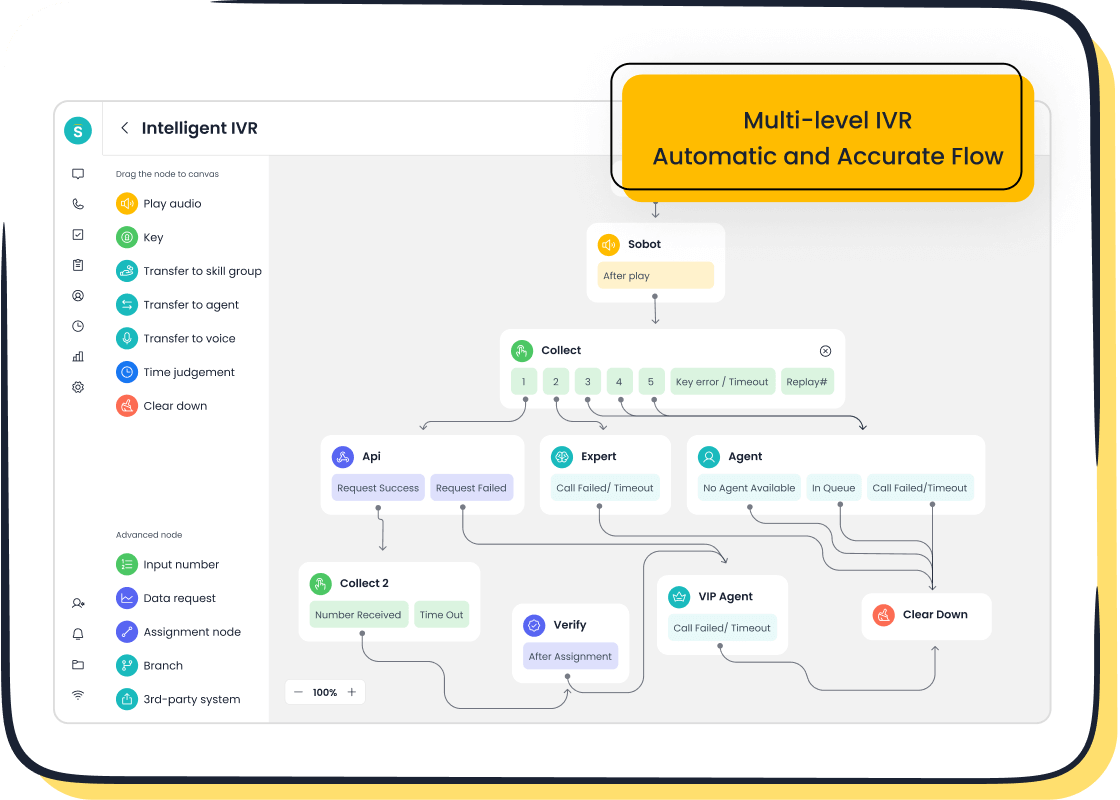Best Practices for Contact Center Analytics Solutions

Analytics plays a vital role in transforming how you manage your contact center. It helps you uncover patterns and measure performance effectively. With tools like customer satisfaction scores and call resolution metrics, you can identify areas for improvement and boost customer experiences. Monitoring agent performance ensures that top performers get recognized and others receive the training they need. Solutions like Sobot's contact centre analytics solutions allow you to reduce inefficiencies, optimize workflows, and lower operational costs. By leveraging contact center analytics solutions, you can drive measurable success in your operations.
Understanding Contact Center Analytics Solutions
Definition and Importance of Contact Center Analytics Solutions
Contact center analytics solutions help you analyze data from customer interactions to improve service quality and operational efficiency. These solutions provide actionable insights into customer behavior, preferences, and satisfaction levels. By leveraging analytics, you can refine processes, enhance customer engagement, and optimize call center performance.
The importance of analytics lies in its ability to transform raw data into measurable outcomes. For example, analytics platforms manage large data volumes, offering insights that improve customer experience and streamline operations. They also support compliance with regulations like PCI-DSS and TCPA, ensuring your contact center adheres to industry standards.
| Definition/Impact | Description |
|---|---|
| Role of Analytics | Improves customer experience, operational efficiency, and drives transformation. |
| Data Management | Manages large data volumes and provides actionable insights. |
| Actionable Insights | Leads to concrete actions that enhance service quality. |
| Business Transformation | Refines processes and improves customer engagement. |
| Quantifiable Metrics | Measures customer satisfaction, workforce engagement, and service quality. |
How Analytics Solutions Drive Call Center Performance
Analytics solutions play a pivotal role in improving call center performance. They help you track key metrics like First Call Resolution (FCR) and Average Handle Time (AHT), which are essential for optimizing call center performance. By identifying trends and patterns, you can address inefficiencies and improve customer satisfaction.
For instance, predictive analytics enable proactive decision-making. You can forecast customer needs and allocate resources effectively. AI-powered analytics tools also automate repetitive tasks, freeing agents to focus on complex issues. This boosts agent productivity and enhances customer experiences.
The pandemic accelerated the adoption of contact center analytics solutions, highlighting their importance in meeting rising customer expectations. Fast issue resolution and personalized experiences have become critical, and analytics solutions help you achieve these goals.

Benefits of Using Sobot's Voice/Call Center for Analytics
Sobot's Voice/Call Center offers advanced analytics features that empower you to optimize call center performance. Its real-time monitoring and analysis tools provide actionable insights into customer interactions. With intelligent IVR and AI-powered Voicebot, you can automate workflows and improve call center performance management.
Sobot's platform ensures data accuracy and reliability, with a system uptime of 99.99%. It supports global telephony contacts and integrates seamlessly with CRM systems, making it a versatile solution for businesses of all sizes. For example, Samsung achieved a 30% increase in agent efficiency and a 97% customer satisfaction rate by using Sobot's contact center analytics solutions.
By leveraging Sobot's tools, you can reduce inefficiencies, enhance customer satisfaction, and drive measurable success in your operations. Learn more about Sobot's Voice/Call Center here.
Key Contact Center Metrics to Track

Tracking the right contact center metrics is essential for improving call center performance and delivering exceptional customer experiences. These metrics serve as key performance indicators (KPIs) that help you measure success, identify areas for improvement, and optimize operations. Below are some of the most critical metrics to monitor.
Customer Satisfaction Score (CSAT) and Its Impact
Customer satisfaction scores are among the most important performance metrics and KPIs for any contact center. CSAT measures how satisfied customers are with the service they receive, directly influencing their loyalty and retention. A higher CSAT score often correlates with better call center performance and customer retention rates.
Tip: Aim for a CSAT score of 85% or higher to achieve world-class service. Only 5% of call centers reach this benchmark, but it significantly boosts customer loyalty.
| CSAT Score Category | Score Range | Description |
|---|---|---|
| Good | 75% - 84% | Considered satisfactory |
| World-class | 85% or higher | Only 5% of call centers achieve this |
Improving CSAT requires focusing on first contact resolution and reducing average handle time. For example, a 1% increase in the first call resolution rate can significantly enhance customer satisfaction. By addressing customer concerns promptly and efficiently, you can create a positive experience that encourages repeat business.
Average Handle Time (AHT) and Efficiency
Average handle time is a critical metric that measures the average duration of customer interactions, including talk time, hold time, and after-call work. A lower AHT indicates higher efficiency, but it’s essential to balance speed with quality to maintain customer satisfaction.
| Aspect | Impact of AHT |
|---|---|
| Efficiency | AHT directly affects operational efficiency. |
| Customer Satisfaction | Faster resolutions improve customer satisfaction. |
| Process Optimization | Monitoring AHT helps identify inefficiencies. |
| Resource Allocation | Understanding AHT aids in better resource management. |
| Continuous Improvement | Regular tracking supports ongoing service enhancements. |
To optimize AHT, focus on streamlining workflows and equipping agents with the tools they need to resolve issues quickly. For instance, Sobot's Voice/Call Center provides a unified workspace and intelligent IVR, enabling agents to access customer information and resolve inquiries efficiently. This not only reduces operational costs but also enhances overall call center performance.
First Call Resolution (FCR) for Customer Retention
First call resolution measures the percentage of customer inquiries resolved during the first interaction. It is one of the most impactful contact center metrics for improving customer satisfaction and retention. Studies show that 52% of customers consider first call resolution the most crucial factor in their experience. Additionally, customers are 2.4 times more likely to stay with a company that resolves their issues quickly.
| Metric | Correlation with CSAT | Industry Benchmark FCR |
|---|---|---|
| First Call Resolution | 1% increase in FCR | Above 75% considered satisfactory |
Improving first contact resolution requires empowering agents with the right tools and training. Sobot's AI-powered Voicebot and real-time monitoring features help agents address customer concerns effectively, reducing the need for follow-ups. By focusing on this metric, you can enhance customer satisfaction and build long-term loyalty.
Agent Performance Metrics for Team Optimization
Agent performance metrics are essential for optimizing team productivity and ensuring consistent call center performance. These metrics provide actionable insights into how agents handle customer interactions, helping you identify strengths and areas for improvement. By tracking these metrics, you can create a high-performing team that delivers exceptional customer satisfaction.
Key performance metrics and KPIs for agent productivity include:
| Metric | Description |
|---|---|
| Customer Satisfaction Score (CSAT) | Direct feedback from customers on service quality. |
| Occupancy Rate | Percentage of an agent’s time spent actively working. |
| Resolution Rate | The number of resolved cases versus total cases handled. |
| Post-Call Work Time | Time taken for post-call administration, indicating productivity. |
Monitoring these metrics allows you to evaluate agent performance comprehensively. For example, a high occupancy rate indicates efficient use of time, while a low post-call work time reflects streamlined processes. By analyzing resolution rates, you can assess how effectively agents resolve customer issues, which directly impacts the first contact resolution rate.
To optimize agent productivity, equip your team with tools that simplify workflows and provide real-time insights. Sobot's Voice/Call Center offers a unified workspace and intelligent IVR, enabling agents to access customer information quickly. This reduces inefficiencies and enhances overall performance. Additionally, training programs based on agent performance metrics can help address skill gaps and improve team collaboration.
Tip: Recognize top-performing agents to boost morale and encourage others to improve. Acknowledging achievements fosters a positive work environment and motivates your team to excel.
Net Promoter Score (NPS) as a Customer Loyalty Indicator
Net Promoter Score (NPS) is a critical contact center metric that measures customer loyalty and their likelihood to recommend your services. It categorizes customers into three groups: promoters, passives, and detractors. Promoters are loyal customers who actively advocate for your brand, while detractors may harm your reputation through negative feedback.
A recent survey of 3,000 customers over three years revealed that 75% were promoters, 25% were passives, and only 5% were detractors. Among promoters, 98% maintained their loyalty, highlighting the strong correlation between NPS and customer retention.
NPS provides valuable insights into customer satisfaction and agent effectiveness. A high NPS indicates that your team consistently delivers excellent service, while a low score signals areas needing improvement. By analyzing NPS alongside other performance metrics, you can identify trends and implement strategies to enhance customer experiences.
To improve NPS, focus on first contact resolution and personalized interactions. Sobot's AI-powered Voicebot and real-time monitoring tools enable agents to address customer concerns efficiently, reducing the need for follow-ups. This not only boosts customer satisfaction but also strengthens loyalty.
Note: Regularly survey your customers to track NPS trends. Use this data to refine your strategies and ensure your contact center remains aligned with customer expectations.
Effective Data Collection and Tools for Contact Center Performance Management
Methods for Collecting Contact Center Data
Effective data collection is the foundation of contact center performance management. You can gather valuable insights through various methods:
- Direct Interactions: Collect data during customer calls, chats, or emails.
- Surveys: Use post-interaction surveys to measure customer satisfaction and gather feedback.
- Social Media: Monitor platforms like Twitter and Facebook to understand customer sentiment.
- Analytics Tools: Leverage tools to track customer behavior and engagement patterns.
- Forms and Sign-ups: Gather basic customer data through website forms, newsletter subscriptions, and account registrations.
These methods help you collect personal, behavioral, and attitudinal data, each offering unique insights into customer preferences and needs. By combining these data types, you can create a comprehensive view of your customers, enabling better decision-making and performance tracking.
Leveraging Sobot's Voice/Call Center for Real-Time Data Monitoring
Sobot's Voice/Call Center provides advanced tools for real-time data monitoring, empowering you to enhance call center performance management. Its features include:
| Feature | Description |
|---|---|
| Boost Conversion | Analyze shoppers, predict future steps, and engage them using real-time and historical data. |
| Ensure Retention | Use real-time monitoring to understand customer needs and improve service quality. |
| Intelligent Solutions | Answer 22.2% of customer questions autonomously, achieving a CSAT score of 97%. |
These capabilities allow you to track customer experience metrics and agent performance in real time. For example, you can monitor call durations, resolution rates, and customer satisfaction scores to identify trends and optimize workflows. Sobot's platform ensures data accuracy and reliability, making it an essential tool for call center performance management.
Advanced Tools for Comprehensive Data Analysis
Advanced data analysis tools play a crucial role in improving contact center performance management. Predictive analytics, speech analytics, and AI-driven insights have proven to enhance operational efficiency and customer satisfaction. For instance, predictive analytics helps forecast call volumes and customer behavior, enabling proactive resource allocation. Speech analytics evaluates customer conversations, providing insights into sentiment and service quality.
AI-powered analytics tools, such as those integrated into Sobot's platform, monitor performance metrics in real time. This allows you to make immediate improvements to service quality. By leveraging these tools, you can identify at-risk customers, optimize agent workflows, and enhance overall call center performance.
Incorporating these advanced tools into your contact center ensures you stay ahead in delivering exceptional customer experiences while maintaining operational excellence.
Techniques for Analyzing Contact Center Performance

Identifying Trends and Patterns in Contact Center Metrics
Analyzing trends and patterns in your contact center metrics is essential for improving performance. By identifying recurring issues or opportunities, you can make informed decisions to enhance customer satisfaction and operational efficiency. For example, tracking metrics like first call resolution and average handle time helps you pinpoint areas where agents may need additional training or support.
To uncover trends effectively, you can use various analytical techniques. These include interaction analytics, which examines voice calls, chat transcripts, and social media interactions to understand customer sentiment. Additionally, monitoring call center performance metrics such as agent productivity and response times provides actionable insights. Operational call data, like staffing levels and call volume patterns, also helps you optimize resource allocation.
| Analytical Technique | Metrics/Components |
|---|---|
| Interaction analytics | Voice calls, transcripts, email, chat, social media, customer feedback |
| Call center performance metrics | Agent productivity, quality assurance, customer satisfaction, response/resolution times |
| Operational call data | Staffing levels, call volume patterns, resource utilization, cost per interaction |
Using tools like Sobot's Voice/Call Center, you can monitor these metrics in real time. Its advanced analytics features allow you to track agent performance and customer satisfaction, ensuring your contact center remains efficient and customer-focused.
Using Predictive Analytics for Proactive Decision-Making
Predictive analytics enables you to anticipate customer needs and address potential issues before they arise. By analyzing historical data, you can forecast call volumes, identify peak times, and allocate resources accordingly. This proactive approach improves call center performance management and ensures a seamless customer experience.
For instance, predictive analytics can help you identify customers likely to churn based on their interaction history. You can then implement targeted retention strategies, such as offering personalized support or exclusive promotions. Additionally, predictive models can optimize staffing by forecasting agent requirements, reducing wait times, and improving first call resolution rates.
Sobot's AI-powered Voicebot integrates predictive analytics to enhance decision-making. It analyzes customer interactions to predict future needs, enabling agents to provide timely and relevant solutions. This not only boosts customer satisfaction but also streamlines operations, making your contact center more efficient.
Segmenting Data for Targeted Insights
Segmenting your data allows you to tailor your strategies to specific customer groups, improving both service quality and operational efficiency. By categorizing customers based on demographics, behavior, or psychographics, you can gain targeted insights that drive better decision-making.
| Segmentation Type | Description |
|---|---|
| Demographic Segmentation | Categorizes customers based on age, gender, income, employment, and geography to tailor communication. |
| Psychographic Segmentation | Analyzes psychological traits, interests, and values to resonate with customer motivations. |
| Behavioral Segmentation | Divides customers based on actions and engagement to provide relevant recommendations and support. |
For example, demographic segmentation helps you understand regional preferences, enabling you to adjust your communication style. Behavioral segmentation identifies frequent callers or high-value customers, allowing you to prioritize their needs. Psychographic segmentation uncovers customer motivations, helping you craft messages that resonate on a deeper level.
Sobot's Voice/Call Center simplifies segmentation by consolidating customer data into a unified workspace. This feature enables agents to access detailed customer profiles, ensuring personalized and efficient service. By leveraging segmentation strategies, you can enhance contact center performance management and deliver exceptional customer experiences.
Implementing Data-Driven Insights for Continuous Improvement
Turning Analytics into Actionable Strategies
Transforming analytics into actionable strategies requires focusing on key metrics that drive measurable outcomes. Metrics like conversion rates, customer acquisition costs, and average order value provide insights into customer behavior and operational efficiency. For example, tracking conversion rates helps you evaluate the effectiveness of your marketing efforts, while customer acquisition costs highlight areas for improvement in attracting new customers.
Organizations like Adobe and Google have successfully implemented data-driven strategies to enhance performance. Adobe shifted to continuous performance supervision, improving employee feedback and management. Google adopted Goals & Key Outcomes (GKOs) to set clear targets, fostering better coordination. Similarly, Sobot's Voice/Call Center equips you with tools to monitor call center performance metrics in real time, enabling you to identify areas for improvement and optimize workflows. By leveraging analytics, you can refine your customer service delivery and enhance customer satisfaction.
| KPI | Purpose |
|---|---|
| Conversion Rates | Evaluates marketing and sales effectiveness. |
| Customer Acquisition Cost | Highlights efficiency in attracting new customers. |
| Average Order Value | Provides insights into purchasing behavior and transaction value. |
Training Agents Using Insights from Sobot's Voice/Call Center
Training agents effectively requires actionable insights derived from analytics tools. Sobot's Voice/Call Center uses intelligent technologies like speech analytics to analyze customer-agent interactions. These insights reveal customer sentiments, call quality, and agent performance, helping you identify training needs and improve customer service delivery.
For instance, speech analytics can pinpoint areas where agents struggle with script adherence or compliance. By addressing these gaps, you can enhance agent performance and ensure consistent service quality. Regular training sessions based on these insights foster skill development and boost confidence among agents. Sobot's unified workspace further simplifies workflows, allowing agents to access customer information quickly and resolve inquiries efficiently. This approach not only improves call center performance management but also elevates the overall customer experience.
Tip: Use real-time monitoring tools to identify training opportunities and provide immediate feedback to agents.
Establishing Feedback Loops for Ongoing Optimization
Feedback loops play a crucial role in contact center performance management. Continuous feedback enables you to adjust processes swiftly, creating a responsive service environment. Real-time data gathering helps identify trends in agent performance and customer satisfaction, allowing you to address issues proactively.
Enhanced communication between agents and quality assurance teams fosters knowledge sharing and timely insights. For example, the Cleveland Clinic used feedback loops to reduce patient wait times by 50% and increase satisfaction by 20%. Similarly, Sobot's Voice/Call Center provides dynamic information that supports continuous learning and improvement. By establishing regular feedback sessions, you can promote a culture of growth and ensure your contact center remains aligned with customer expectations.
Note: Regular feedback not only improves efficiency but also strengthens team collaboration and service quality.
Overcoming Challenges in Contact Center Analytics Adoption
Addressing Data Silos and Integration Barriers
Data silos often hinder your ability to fully utilize analytics in your contact center. These silos create barriers between departments, making it difficult to share information and collaborate effectively. In fact, 80% of contact center managers report significant barriers that prevent efficient data utilization, while 71% of consumers notice negative impacts caused by these silos.
| Challenge | Percentage (%) | Description |
|---|---|---|
| Barriers between contact center and organization | 80% | Contact center managers report significant barriers that prevent effective data utilization. |
| Consumers noticing negative impacts | 71% | A majority of consumers experience negative effects due to data silos in contact centers. |
Breaking down these silos improves contact center performance management by providing a unified view of customer interactions. This allows you to trace customer journeys and adjust strategies in real time, leading to better customer experiences and more effective operations. To address integration barriers, consider adopting solutions like data warehouses, data lakes, or data cloud platforms. These tools consolidate information, reduce inefficiencies, and ensure consistent data quality.
Ensuring Data Accuracy and Reliability
Accurate and reliable data forms the backbone of effective call center performance management. Without it, your decisions may lack precision, leading to inefficiencies. To ensure data accuracy, you can implement the following measures:
- Input validation to verify that all mandatory fields are filled correctly.
- Back-end checks to identify outliers or inconsistencies in your data.
- Duplicate detection algorithms to remove redundant entries.
These steps help you maintain high-quality data, enabling better decision-making and continuous improvement. For example, accurate data allows you to monitor agent performance effectively, ensuring that your team meets customer expectations consistently.
Overcoming Resistance to Analytics Adoption in Teams
Resistance to change is a common challenge when introducing analytics tools. Employees may feel uncertain about new processes or worry about job security. To overcome this, you should focus on clear communication and training. Explain the benefits of analytics adoption, such as improved call center performance and streamlined workflows. Share real-life examples to illustrate how these tools enhance both individual and team success.
You can also implement a structured approach to change management:
- Build awareness by explaining why the change is necessary.
- Foster desire by aligning the change with personal and team benefits.
- Provide knowledge through training and resources.
- Develop ability by offering coaching and feedback.
- Reinforce progress by recognizing and rewarding achievements.
By addressing concerns and equipping your team with the right skills, you can create a positive environment that embraces analytics adoption. This ensures long-term success in contact center performance management.
Contact center analytics solutions are essential for enhancing customer satisfaction and driving operational performance. By leveraging metrics like CSAT, NPS, and FCR, you can uncover actionable insights that improve call center performance and streamline workflows. Sobot's Voice/Call Center empowers you with real-time monitoring and advanced analytics, ensuring effective contact center performance management. Continuous monitoring and adaptation allow you to stay ahead of customer expectations, fostering long-term success. Embrace these solutions to optimize agent performance, reduce inefficiencies, and deliver exceptional customer experiences.
Note: Metrics such as Peak Hour Traffic and Repeat Call Rate provide valuable insights for call center performance management, enabling proactive decision-making.
FAQ
What is the role of analytics in improving call center performance?
Analytics helps you track key metrics like customer satisfaction and agent productivity. It identifies inefficiencies and provides actionable insights to optimize workflows. This ensures better resource allocation and enhances customer experiences.
How does Sobot's Voice/Call Center ensure data accuracy?
Sobot's platform uses advanced tools like real-time monitoring and encrypted data transfer. These features maintain data accuracy and reliability, ensuring your decisions are based on trustworthy information.
Can Sobot's analytics tools integrate with existing systems?
Yes, Sobot's analytics tools integrate seamlessly with CRM systems and other platforms. This allows you to unify customer data and streamline operations without disrupting your current workflows.
How does real-time monitoring benefit contact centers?
Real-time monitoring helps you identify issues as they occur. This enables immediate action to improve customer satisfaction and agent performance. It also ensures your contact center remains efficient and responsive.
What industries benefit most from Sobot's solutions?
Sobot serves industries like retail, financial services, gaming, and education. Its solutions cater to businesses of all sizes, helping them enhance customer interactions and operational efficiency.
See Also
Best Call Center Analytics Tools You Need in 2024
Leading Contact Center Solutions Evaluated for 2024
Best Cloud Contact Center Solutions Available in 2024
Enhancing Call Center Efficiency Through Effective Monitoring
